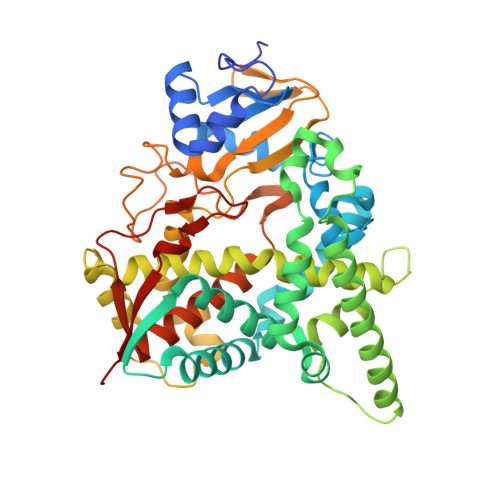Rational Development of 4-Aminopyridyl-Based Inhibitors Targeting Trypanosoma Cruzi Cyp51 as Anti-Chagas Agents.
Choi, J.Y., Calvet, C.M., Gunatilleke, S.S., Ruiz, C., Cameron, M.D., Mckerrow, J.H., Podust, L.M., Roush, W.R.(2013) J Med Chem 56: 7651
- PubMed: 24079662
- DOI: https://doi.org/10.1021/jm401067s
- Primary Citation of Related Structures:
4BJK - PubMed Abstract:
A new series of 4-aminopyridyl-based lead inhibitors targeting Trypanosoma cruzi CYP51 (TcCYP51) has been developed using structure-based drug design as well as structure-property relationship (SPR) analyses. The screening hit starting point, LP10 (KD ≤ 42 nM; EC50 = 0.65 μM), has been optimized to give the potential leads 14t, 27i, 27q, 27r, and 27t, which have low-nanomolar binding affinity to TcCYP51 and significant activity against T. cruzi amastigotes cultured in human myoblasts (EC50 = 14-18 nM for 27i and 27r). Many of the optimized compounds have improved microsome stability, and most are selective against human CYPs 1A2, 2D6, and 3A4 (<50% inhibition at 1 μM). A rationale for the improvement in microsome stability and selectivity of inhibitors against human metabolic CYP enzymes is presented. In addition, the binding mode of 14t with the Trypanosoma brucei CYP51 (TbCYP51) orthologue has been characterized by X-ray structure analysis.
Organizational Affiliation:
Department of Chemistry and ∥Department of Molecular Therapeutics, Scripps Florida , Jupiter, Florida 33458, United States.
















